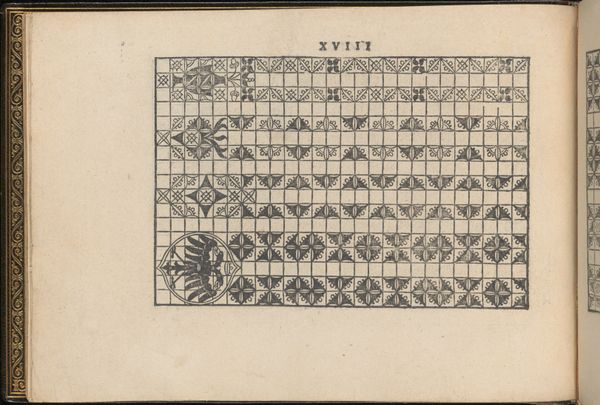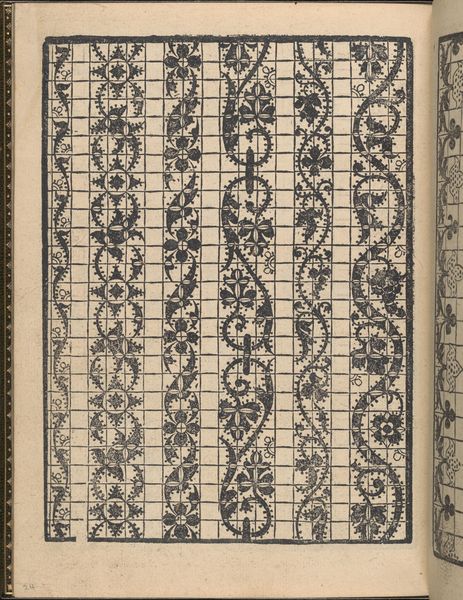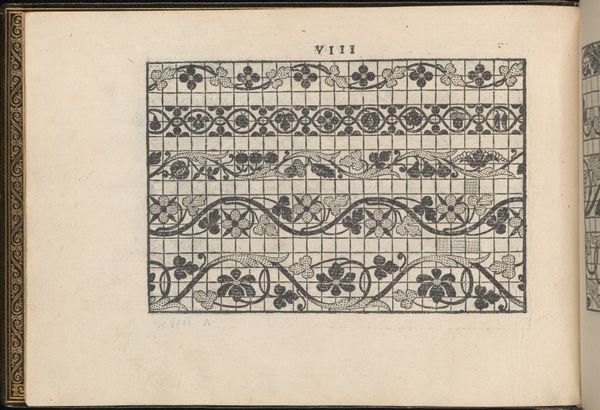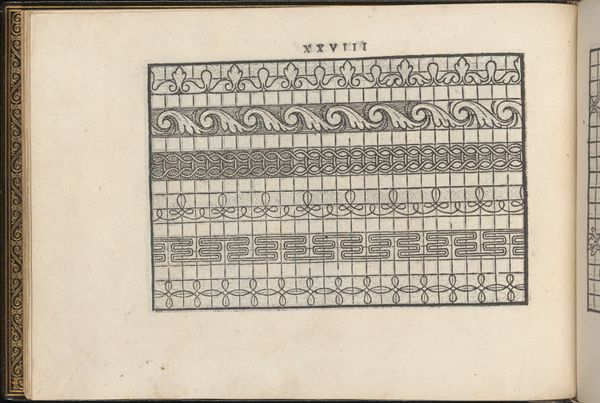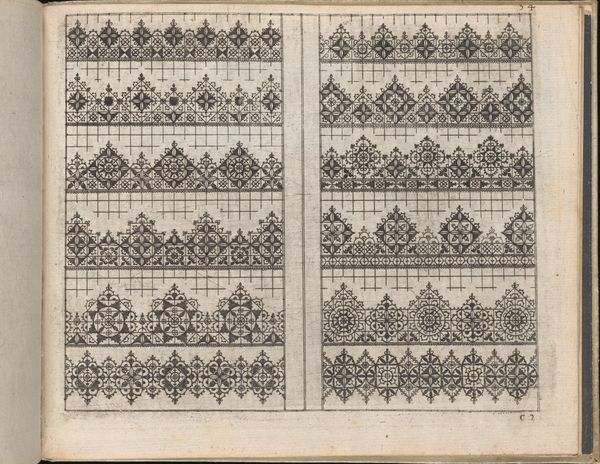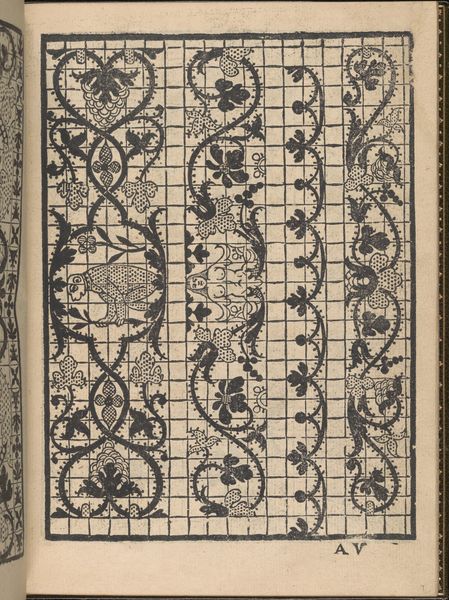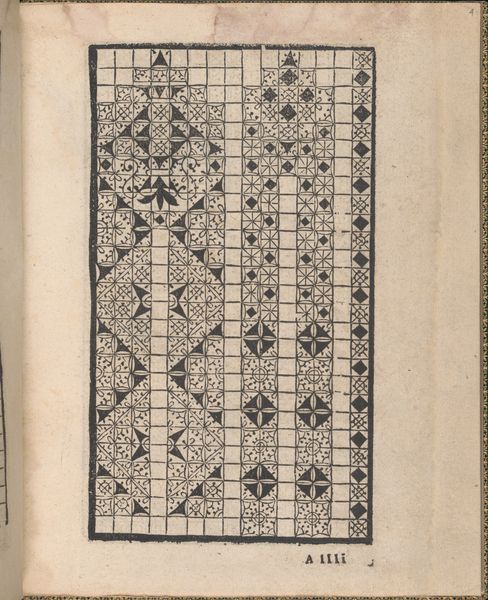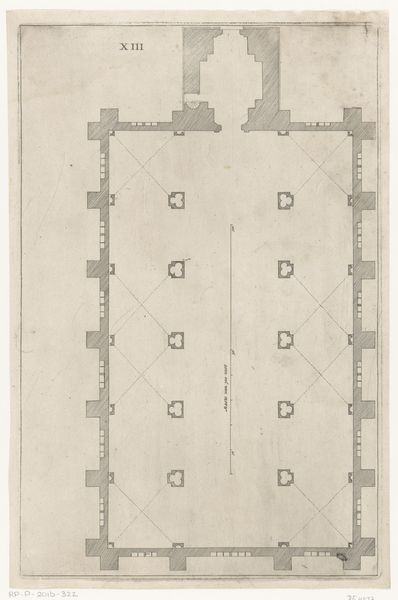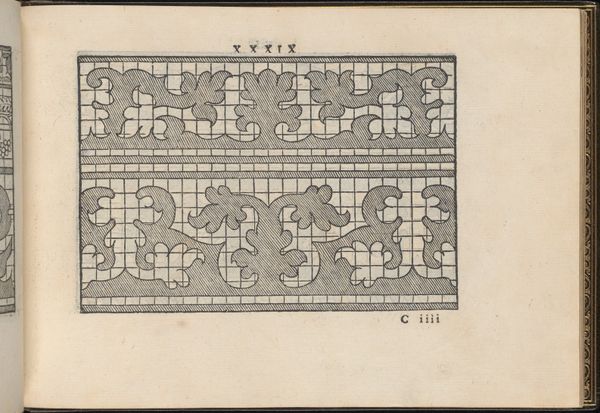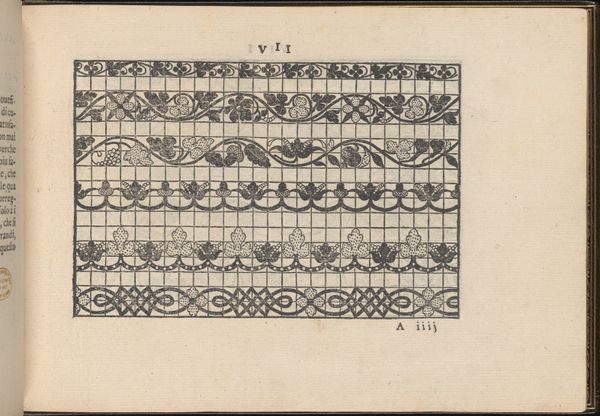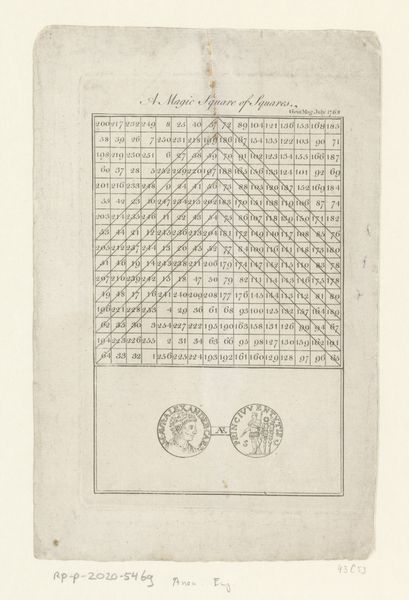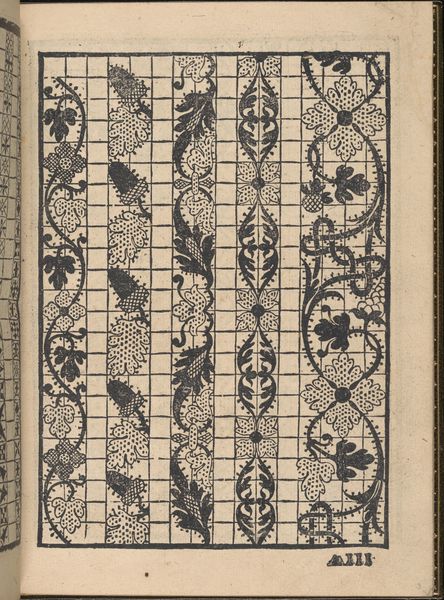
La vera perfettione del disegno di varie sorti di recami, page 4 (verso) 1557
0:00
0:00
drawing, graphic-art, ornament, print, paper
#
drawing
#
graphic-art
#
ornament
# print
#
book
#
paper
#
11_renaissance
#
italian-renaissance
Dimensions: Overall: 5 11/16 x 7 1/2 in. (14.5 x 19 cm)
Copyright: Public Domain
Curator: This striking graphic, titled "La vera perfettione del disegno di varie sorti di recami, page 4 (verso)," comes to us from Giovanni Ostaus in 1557. It's currently housed at the Metropolitan Museum of Art, and what we're seeing here is a page from a book, rendered in print. Intricate, isn't it? Editor: It reminds me of textiles. From a distance, it could be a woven pattern, maybe something you’d find adorning a Renaissance tapestry. It's this series of bands, all variations on a theme of geometric precision, right? But the more I look at it, the more it reads as a regimented composition... almost rigid. Curator: Exactly! It's fascinating to consider this within the context of the Italian Renaissance and the proliferation of printed pattern books. These designs weren't just aesthetic exercises; they served as templates for embroidery and other needlework, primarily undertaken by women. These books were instrumental in shaping visual culture. Editor: Yes, and let’s not overlook how such guides participated in the construction of gendered labour. Women's artistic contributions often go unacknowledged, as these types of 'domestic' creations were seen as minor arts or hobbies, rather than skillful professional work. Curator: Absolutely, and it is very easy to get caught up in looking at this design merely aesthetically and thus miss the social implications entirely. I love how it encapsulates the ideals of perfection—la vera perfettione—yet also confines creative expression within very defined parameters. Almost like the ultimate stitch sampler. Does that read to you like liberation or repression? Editor: Both, possibly? These designs facilitated artistic expression for those who might not have otherwise had access to it. The democratization of art, if you will. But it also enforced a certain standard of taste, limiting the possibilities. So, an accessible prison perhaps? A pretty paradox. Curator: It certainly prompts reflections on skill, labor, gender, and power, doesn’t it? Ostaus may have believed that the "true perfection" lay in these repeating, regulated designs, but from our vantage point, that true perfection has cracks within its facade. Editor: Indeed, it reveals the subtle, often invisible, power structures embedded in even the most beautiful objects. Food for thought as we appreciate its historical significance.
Comments
No comments
Be the first to comment and join the conversation on the ultimate creative platform.

